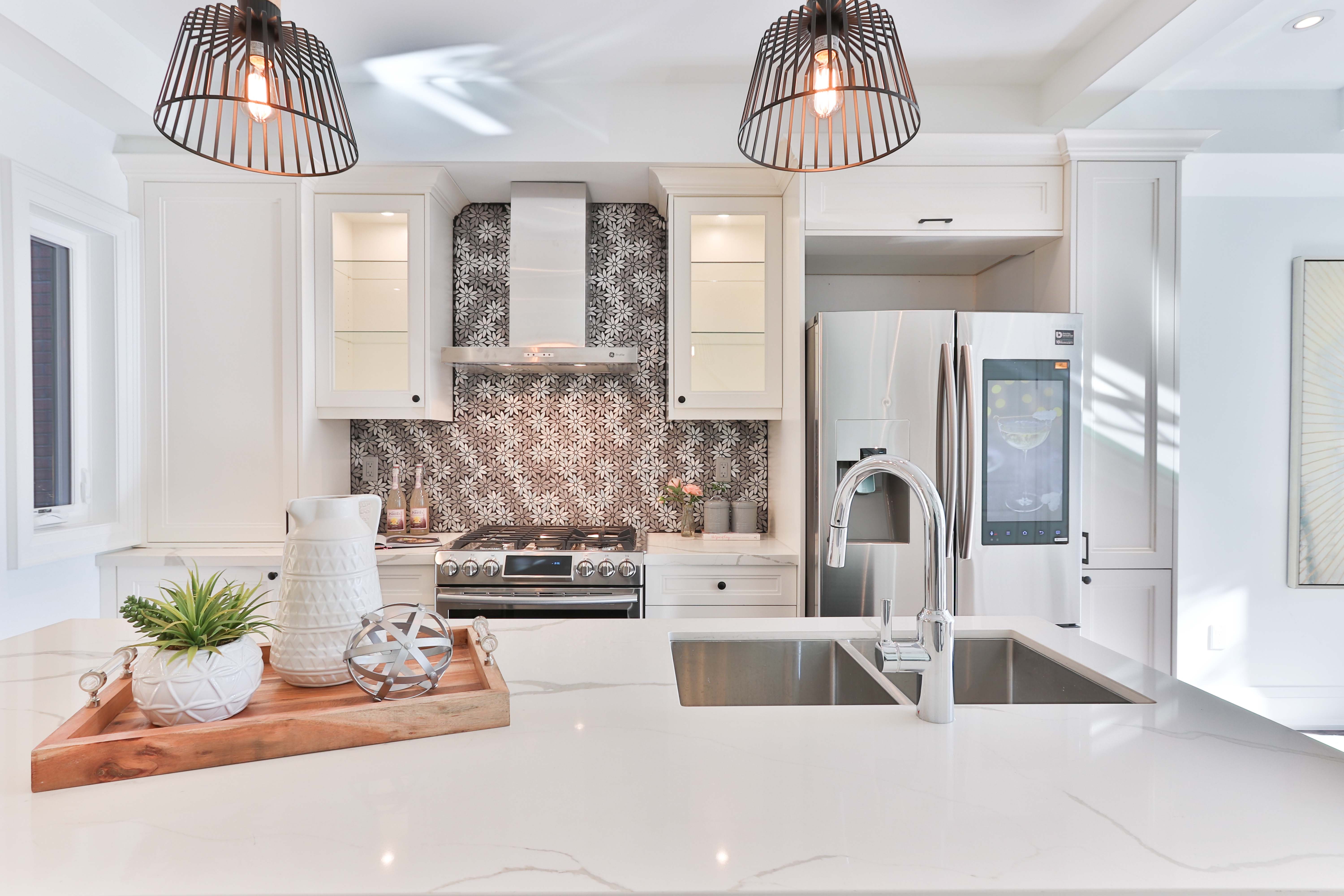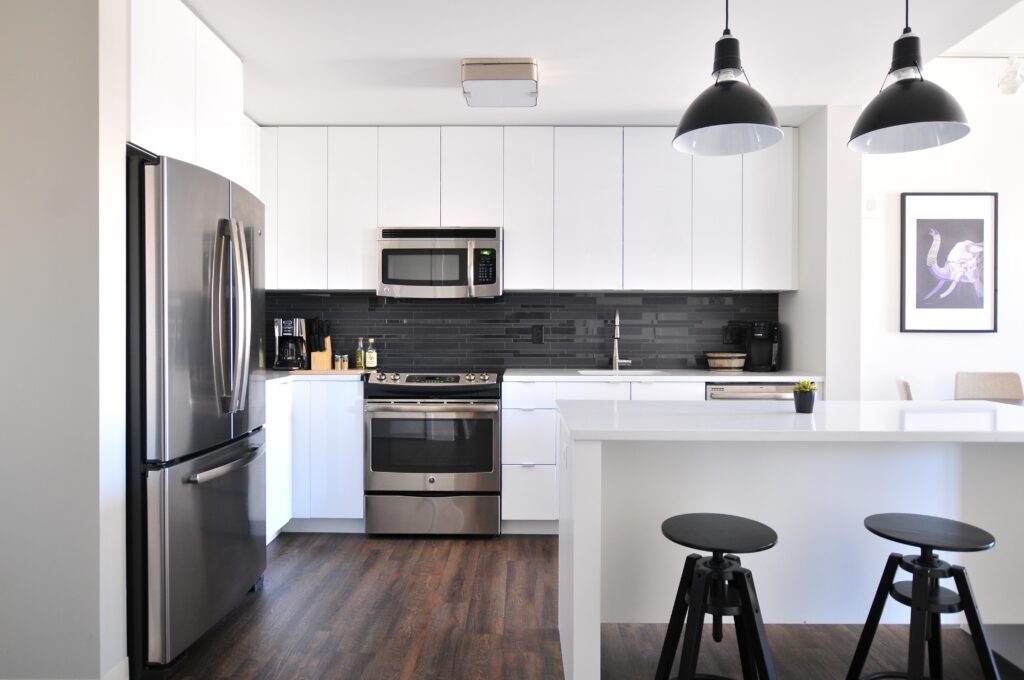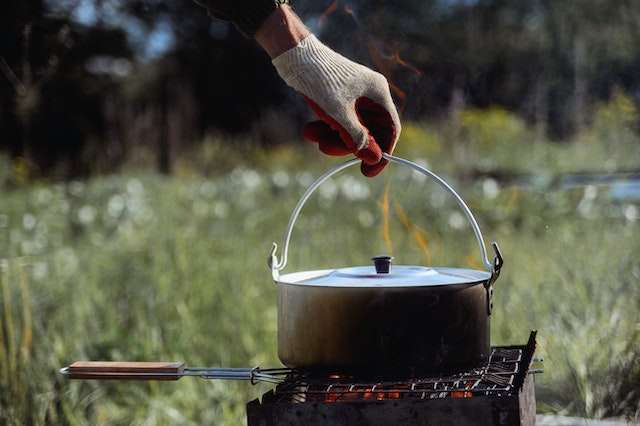Starting a small kitchen can be an exciting and fulfilling endeavor. Whether you are an aspiring food entrepreneur or simply looking to create a functional space for culinary experiments, the possibilities are endless. With careful planning and creativity, you can transform your compact space into a hub of culinary delights. In this guide, we will explore the essential steps to help you kickstart your small kitchen project. From maximizing every inch of space to selecting the right equipment and organizing your ingredients, we will equip you with the knowledge and inspiration you need to get started. So, let’s dive in and unlock the potential of your small kitchen!
Table of Contents
How do I start a small kitchen
Starting a small kitchen can be both exciting and challenging. Whether you’re a culinary enthusiast or a professional chef looking to open your own cozy space, there are several key factors to consider before diving into the process. In this article, we will explore the essential steps and tips on how to start a small kitchen and make it thrive.
The Importance of Planning
Before you embark on your small kitchen journey, the first crucial step is careful planning. This involves envisioning the type of kitchen you want and conducting thorough market research. By investing time into strategic planning, you’ll have a solid foundation for success.
To start, consider your target audience and the specific niche you want to cater to. Are you aiming to create a bakery that specializes in gluten-free options? Or perhaps a small café with a focus on locally sourced ingredients? Understanding your target market will guide your decisions on menu selection, pricing, and overall ambiance.
Furthermore, conducting market research will help you gauge the demand for your concept and identify potential competitors. By understanding the existing landscape, you can position yourself effectively and offer something unique to attract customers.
Securing the Right Location
Selecting the right location is crucial for the success of your small kitchen. Consider the foot traffic, proximity to other businesses, accessibility, and parking options. If you’re aiming to capture a lunch crowd, a location near offices or schools may be ideal.
When scouting for locations, take note of any zoning restrictions or permits required for operating a food business. Consult with local authorities to ensure you comply with all regulations to avoid any legal issues down the line.
Additionally, evaluate the infrastructure of the potential location. Is it equipped with the necessary utilities, such as water, gas, and electricity? Depending on your menu, you may require specific equipment, so it’s essential to assess if the space can accommodate your needs.
Creating a Functional Layout
Designing a small kitchen with optimal functionality is key to maximizing efficiency. Start by envisioning the flow of your kitchen—how will you move from prepping ingredients to cooking and plating? Consider the work triangle concept, which emphasizes the strategic placement of the main work areas: the fridge, the stove, and the sink.
Utilize the available space wisely. Invest in storage solutions that make the most of verticality, such as wall-mounted shelves or hanging racks. Use multifunctional equipment to save space, such as combination ovens or countertop appliances. By optimizing your kitchen layout, you’ll make cooking a breeze and increase productivity.
Equipping Your Small Kitchen
Investing in the right equipment is fundamental to operating a small kitchen smoothly. Start by considering the menu items you plan to offer and the equipment needed to execute them effectively. This could range from basic kitchen essentials like pots, pans, and knives to specialized equipment like an espresso machine or a pizza oven.
While it may be tempting to purchase all the latest gadgets, prioritize quality over quantity. Opt for reliable and durable equipment that will withstand the demands of a commercial kitchen. Additionally, consider energy-efficient options to minimize utility costs in the long run.
Developing a Menu to Suit Your Space
When designing your menu, it’s essential to consider the limitations of a small kitchen. While you may have grand culinary aspirations, it’s crucial to assess what is feasible within your space and equipment constraints.
Focus on offering a concise and well-curated menu that showcases your specialties. By focusing on a few signature dishes, you can streamline operations and ensure consistency in quality. Additionally, consider offering daily specials or rotating menu items to keep customers excited and encourage repeat visits.
Building a Strong Team
Even in a small kitchen, teamwork plays a vital role in the success of your business. Choose your staff carefully, ensuring they share your passion for the culinary arts and possess the necessary skills. Look for individuals who are adaptable, organized, and can thrive in a fast-paced environment.
Provide your team with adequate training and clear communication to foster a positive work environment. Encourage open dialogue and regularly seek their input on improving kitchen processes. Remember, a strong team will not only ensure efficient operations but also contribute to creating a welcoming atmosphere for your customers.
Promoting Your Small Kitchen
No matter how incredible your small kitchen is, it won’t thrive if people are unaware of its existence. Marketing and promotion are essential to attract customers and build a loyal following.
Start by creating an online presence through a well-designed website and active social media channels. Showcase your unique menu items, post mouth-watering photos, and engage with your audience. Consider partnering with food bloggers or influencers to generate buzz and reach a wider audience.
Don’t overlook traditional marketing methods either. Distribute flyers in the local area, participate in food festivals or community events, and network with other local businesses. Word-of-mouth recommendations are invaluable for small kitchens, so prioritize creating exceptional experiences for your customers.
Consistency is Key
Once you’ve successfully launched your small kitchen, it’s crucial to maintain consistency. Consistency not only applies to the quality of your dishes but also to the overall experience you provide.
Continuously seek customer feedback and make adjustments where necessary. Pay attention to the trends in the culinary industry and ensure you stay relevant by periodically updating your menu and offerings. By staying consistent and continuously improving, you’ll foster customer loyalty and long-term success.
In Conclusion
Starting a small kitchen can be an exciting venture, but it requires careful planning, strategic decision-making, and hard work. By following these essential steps, you’ll be well on your way to creating a thriving small kitchen that delights customers and leaves a lasting impression. Remember, it’s not just about cooking—it’s about crafting an extraordinary culinary experience.

Photo by Naomi Hébert on Unsplash
Additional Guide
Here are three related articles that you can link to within your article:
1. How to Make Mugwort Tea: A Guided Journey to Relaxation and Healing – Learn how to make mugwort tea and explore its numerous health benefits. Read more…
2. Wood Kitchen Cabinet: 10 Best Ideas for Stylish and Functional Storage – Discover 10 stunning ideas for wood kitchen cabinets that offer both style and functionality. Read more…
3. Things to Consider When Designing a Kitchen – Get valuable tips on essential factors to consider when designing your small kitchen, from layout to appliances. Read more…
FAQs: How do I start a small kitchen
1. What are the essential appliances and tools needed to start a small kitchen?
To start a small kitchen, you will need some essential appliances and tools such as:
– A compact refrigerator
– An electric stove or a portable cooktop
– A microwave oven
– A toaster or toaster oven
– Basic cooking utensils like a spatula, tongs, and mixing spoons
– Cutting boards and a sharp knife set
– Pots and pans of various sizes
– Mixing bowls and measuring cups
– Small kitchen appliances like a blender, coffee maker or kettle (optional, depending on your needs)
2. How can I maximize the space in my small kitchen?
To maximize the space in your small kitchen, you can:
– Use vertical storage solutions like wall-mounted shelves or hanging racks for pots and pans.
– Utilize the inside of cabinet doors to hang utensils or install hooks for hanging cups or mugs.
– Invest in multi-purpose kitchen gadgets or tools that can save space.
– Use stackable or collapsible containers for storage to make the most of available cupboard space.
– Consider installing pull-out shelves or organizers in your cabinets to make accessing items easier.
– Use drawer dividers or inserts to keep utensils and cutlery organized.
– Keep countertops clear by using wall-mounted storage options for spices, knives, and other frequently used items.
3. How should I plan the layout of a small kitchen?
When planning the layout of a small kitchen, consider the following tips:
– Optimize the kitchen work triangle by placing the refrigerator, stove, and sink within easy reach of each other.
– Use drawers instead of cabinets whenever possible, as they provide easier access to items.
– Prioritize counter space for food preparation by installing a pull-out cutting board or utilizing a kitchen island or cart.
– Keep frequently used items within easy reach and store the less frequently used ones in higher or lower cabinets.
– Consider installing open shelves instead of upper cabinets to create an illusion of openness and make items more accessible.
– Use light-colored or glossy finishes for cabinets and surfaces to reflect light and make the space feel more spacious.
– Install adequate lighting to ensure the kitchen is well-lit, including task lighting for countertops and food preparation areas.
– Utilize built-in storage options like spice racks, wine racks, or built-in trash and recycling bins to save space.
4. How can I make my small kitchen look more spacious?
To make a small kitchen look more spacious, you can try the following:
– Use light and neutral colors for the walls, cabinets, and countertops to create an airy and open feel.
– Install good lighting, including natural light if possible, to make the space brighter and feel more expansive.
– Use mirrors strategically to visually expand the space.
– Minimize clutter by organizing and decluttering regularly. Keep countertops clear of unnecessary items.
– Utilize glass-front cabinet doors to create depth and display visually appealing items.
– Use open shelving sparingly to create visual interest and make the space feel less enclosed.
– Ensure that the kitchen is well-ventilated to avoid a cramped or stuffy feel.
– Consider using a compact or slimline design for appliances and furniture to save on space.
– Hang curtains or blinds that allow natural light to enter while still providing privacy.



